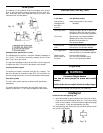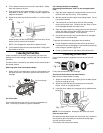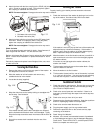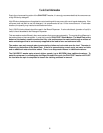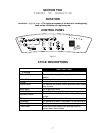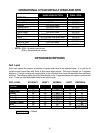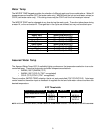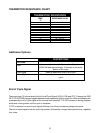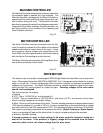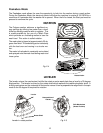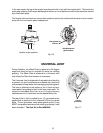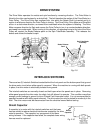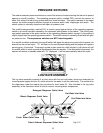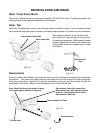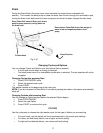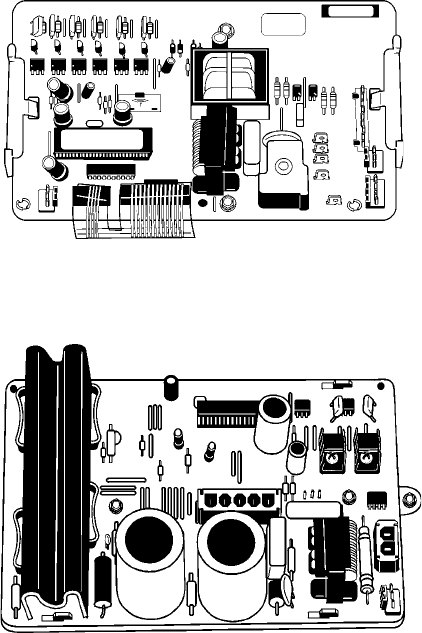
11
MACHINE CONTROLLER
The Machine Controller interprets the consumer inputs from
the keyswitch pads to operate the cycle selected. The
Machine Controller interfaces with the Motor Controller to
operate the Drive motor and Pump motor through their vari-
ous functions during the cycle. The Machine Controller
also directly operates the water fill and dispenser solenoids,
interprets the thermistor readings, lid switch condition, as
well as the position of the contacts in the Operating and
Flood Pressure switches.
MOTOR CONTROLLER
The Motor Controller receives commands from the Ma-
chine Controller to operate the Drive Motor at the desired
speed and direction at various times in the cycle. It does
so by applying varying voltages and frequencies to the
Drive Motor to control speeds and by electrically leading
with the Main or Aux winding to control direction.
The Motor Controller also operates the Pump Motor direc-
tion to either recirculate or drain water.
This washer uses a reversible, variable speed SPIM (Single Phase Induction Motor) as its main drive
motor. Motor speed varies from 350 RPM to 4500 RPM. The ½ horsepower motor draws five to seven
amps, in normal use. It uses a voltage output from the motor controller and operates at variable AC
voltages and frequencies. The Motor Controller provides a variable frequency signal to the motor,
which provides the various speeds to nutate and spin. Checking voltages to the drive motor
should not be attempted.
The drive motor has five outputs.
a) Ground
b) FTC- This is 120VAC 60 Hz. and is basically L1.
c) FHOT- This is a combination of 120 VAC 60 Hz, (the return of FTC), and common of the motor,
which is variable frequency and variable voltage.
d) Main- This is one of the windings of the motor. The main winding operates at voltages approximately
170V above and below L1 at a rate of 15K Hz. It uses a variable duty cycle square wave at a voltage
that varies from 30 to 146 VAC referenced to FHOT. The operating frequency varies from 12 to 156 Hz.
The frequency is directly proportional to the speed of the motor. (Higher Frequency = Higher Speed).
In spin, one winding will lead and the other follow. In nutate, the lead winding will be reversed.
e) Auxiliary- See Main winding.
A thermal protector is used to direct voltage to the motor controller instead of acting as a
shut-off for the motor. If the protector is tripped, voltage will be removed from the motor
controller, which in turn, will remove voltage from the drive motor.
DRIVE MOTOR
Fig. 2-2
Fig. 2-3



